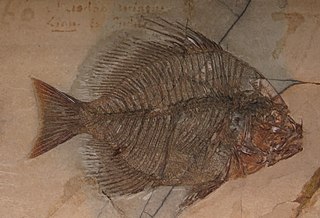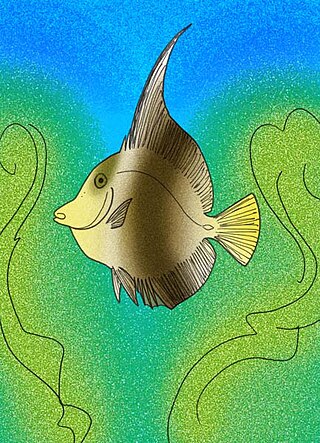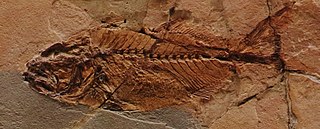
Weevers are nine extant species of fishes of family Trachinidae, order Trachiniformes, part of the Percomorpha clade. They are long, mainly brown in color, and have venomous spines on their first dorsal fin and gills. During the day, weevers bury themselves in sand, just showing their eyes, and snatch prey as it comes past, which consists of shrimp and small fish.

The trumpetfishes are three species of highly specialized, tubularly-elongated marine fishes in the genus Aulostomus, of the monogeneric family Aulostomidae. The trumpetfishes are members of the order Syngnathiformes, together with the seahorses and the similarly built, closely related cornetfishes.

Urolophus is a genus of round rays mostly native to the western Pacific Ocean and the Indian Ocean, though one species occurs in the Pacific waters of the Mexican coast. Müller and Henle erected Urolophus in an 1837 issue of Bericht Akademie der Wissenschaften zu Berlin. The name is derived from the Greek oura, meaning "tail", and lophos, meaning "crest". In Urolophus, the outer rims of the nostrils are not enlarged into lobes, but may form a small knob at the back.

Trachiniformes is an order of percomorph bony fish, whose contents are traditionally placed in suborder Trachinoidei of Perciformes.

Aeoliscoides is an extinct genus of prehistoric ray-finned fish that lived from the early Eocene. It is known from a single species, A. longirostris, from the famous Monte Bolca site of Italy. It was a member of Centriscidae, making it a relative of modern shrimpfish and snipefish. Its name references its close resemblance to the extant shrimpfish genus Aeoliscus.
Aulostomoides is an extinct genus of prehistoric marine ray-finned fish from the early Eocene. It contains a single species, A. tyleri from the Monte Bolca site of Italy. It is thought to be a member of Aulostomoidea, making it a relative of trumpetfish and cornetfish.
Calamostoma is an extinct relative of the ghost pipefish that lived during the early Eocene. It contains a single species, C. lesiniforme from the famous Monte Bolca site of Italy. It is one of the few known fossil ghost pipefishes. Calamostoma and the other Bolca solenostomid, Solenorhynchus, are both placed in the extinct subfamily Solenorhynchinae.
Aulorhamphus is an extinct genus of prehistoric marine ray-finned fish that lived from the early to middle Eocene. It contains four species known from the Early Eocene of Italy and the Middle Eocene of Russia. It was an aulorhamphid, an extinct family of syngnathiform fishes.
Anguilloides is an extinct genus of prehistoric marine eel that lived in the early Eocene. It contains a single species, A. branchiostegalis. Fossils are known from the famous Monte Bolca site of Italy.

Bolcyrus is an extinct genus of prehistoric marine eel that lived during the Early Eocene. It was a member of the family Congridae, which also contains modern conger eels.
Bolcanguilla is an extinct genus of prehistoric marine eel that lived during the early division of the Eocene epoch. It contains a single species, B. brachycephala from the Monte Bolca site of Italy. Its exact taxonomic affinities within the Anguilliformes remain uncertain.

Acanthonemus is an extinct genus of prehistoric marine ray-finned fish that lived from the early Eocene. It contains a single species, A. subaureus, known from the famous Monte Bolca site in Italy. It is the only genus in the extinct family Acanthonemidae.

Archaephippus is an extinct genus of prehistoric spadefish that lived from the early Eocene. It contains a single species, A. asper, known from Italy. Several exquisitely preserved fossils have been found from the Monte Bolca lagerstatten. Some juvenile specimens preserve the vertical striped coloration that they would have likely had in life.
Callipteryx is an extinct genus of prehistoric marine trachiniform fish that lived during the early Eocene. It is the only known member of the extinct family Callipterygidae. It is thought to have been a relative of weeverfishes.

Eozanclus brevirostris is an extinct relative of the Moorish idol that lived during the late Ypresian epoch of the Eocene in what is now Monte Bolca, northern Italy. It differs from its living relative by having a much shorter snout.

Carangopsis is an extinct relative of the bluefish that lived during the early Eocene. It contains two species, both from the famous Monte Bolca site of Italy.

Carangodes is an extinct genus of prehistoric ray-finned fish that lived during the early Eocene. It contains a single species, C. bicornis, from the famous Monte Bolca site in Italy. It is the only known member of the extinct perciform family Carangodidae.
Acanthopygaeus is an extinct genus of prehistoric marine perciform fish in the family Siganidae. It is known from the Eocene lagerstätte "Pesciara" in Bolca, Italy.

Aulostomoidei is a superfamily of the order Syngnathiformes, which also contains groups such as the seahorses, pipefishes and dragonets. It is one of two superfamilies which make up the suborder Aulostomoidei within the Syngnathiformes.

Siphonostomites hesionoides is a species of polychaete annelid known only from subtidal lagoon deposits from the Early Eocene of Monte Bolca, Verona, Italy.














